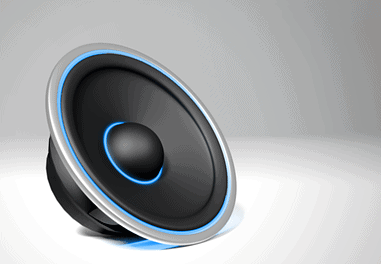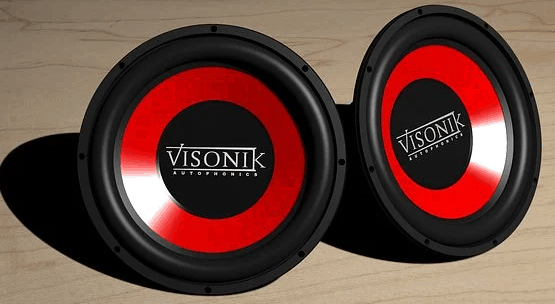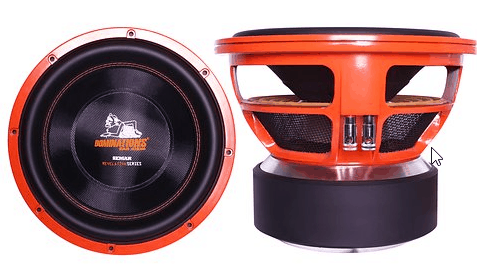Buying a good set of speakers is not enough. You have to know certain factors to get the car audio setup right.
Crossover in one such component. Its importance is far more than you can imagine. A good crossover can even get the best out of low-quality speakers.
Today we are going to look at how to set subwoofer crossover frequency for car audio.
Want to know how a crossover works and what is the importance of crossover frequency?
Sit back and read on and all your queries will be cleared up.
Let's begin:
What is a crossover and how does it work?

As discussed above, a crossover is a crucial component of a speaker system. The primary function of a crossover is to separate the sound signal into various frequencies.
After the breakdown, each frequency is directed towards the dedicated speaker driver. By doing so, crossovers derive the best audio performance out of the speakers.
In addition to that, crossovers also filter out unwanted frequencies. These frequencies hamper the quality of audio output by making them sound muddy. This is where the crossover steps in.
Basically, there are two types of crossovers – active and passive. We will be talking about them at length in the latter part of this article.
But for now, you have to remember three things for setting crossover frequency – low-pass filter, high-pass filter, and crossover slope.
Subwoofers require a low-pass filter to cut out the higher frequencies. Meanwhile, midrange speakers and tweeters need a high-pass filter to get rid of the low-end frequencies.
Lastly, the crossover slope is a measurement of the amount of filtering ability for the crossover.
So a crossover works by first dividing the sound into different frequencies and then sending them to specific speaker drivers.
How to configure crossover frequency for a car audio system?

Understanding how a crossover works are one part of the process. You also have to know how to configure crossover frequency for car audio systems.
The configuration varies depending on the car audio setups. We will discuss some of the crossover frequency configurations in correspondence to the type of audio setup:
When there is a subwoofer, component speakers in the front, and coaxial speakers in the rear
In this setup, the subwoofer and the front component speakers will need a crossover.
Generally, coaxial speakers have an active crossover built into them. A passive crossover is a rare inclusion in a coaxial speaker. So you need to get a passive crossover for this audio setup.
You will also need a low-pass filter and high-pass filter to cut off the low and high-end frequencies respectively.
The ideal crossover frequencies for audio setup will be as follows:
- Subwoofer: 80Hz on the low-pass filter with a slope of 12/24 dB
- Front component drivers: 80Hz on the high-pass filter with a slope of 12/24 dB
- Rear coaxial drivers: 80Hz on the high-pass filter with a slope of 12/24 dB
Note that these crossover frequencies are best suited for speakers of 5.25-inches or more.
For smaller speakers, you have to increase the frequency. 300Hz is a safe frequency to start with. If the sound distorts in the midrange, slowly bring down the frequency.
Even if that does not fix the distortion, try increasing the frequency until the output clears up.
When there is a subwoofer and component speakers in the front
A passive crossover will be the best choice for this audio setup. By using the high-pass filter, the crossover will direct the frequencies to the midrange driver and the tweeters.
If the component speakers are 3-way, the crossover will send the low, mid, and high frequencies to the dedicated drivers.
On the other hand, you will need a low-pass filter for the subwoofer.
The following crossover frequencies are ideal for this audio setup:
- Subwoofer: 80Hz on the low-pass filter with a slope of 12/24 dB
- Front component drivers: 80Hz on the high-pass filter with a slope of 12/24 dB
Just the first audio setup, this frequency configuration works for speakers that are 5.25-inches or more than that.
In the case of distortions, tweaking the frequencies in the above mentioned similar manner will solve the issue
When there are a subwoofer and 2-way component speakers in the front
The configuration of crossover frequencies is a little different for this kind of audio setup.
The subwoofer will need a low-pass filter, while the midrange driver and the tweeters will need a band-pass filter and a high-pass filter respectively.
The following are the crossover frequencies for this setup:
- Subwoofer: 80Hz on the low-pass filter with a slope of 12/24 dB
- Midrange drivers: 80Hz high-pass filter and 5kHz low-pass filter set on the band-pass filter with a slope of 12/24 dB
- Tweeters: 5kHz on the high-pass filter with a slope of 12/24 dB
When there are a subwoofer and 3-way component speakers in the front
Once again, the configuration will slightly change for the 3-way component speakers. The tweeters will need a high-pass filter, the midrange driver will need a band-pass filter, and the woofer will need a band-pass filter as well.
As for the subwoofer, a low-pass filter should be sufficient.
After that, set the following crossover frequencies for this audio setup:
- Subwoofer: 80Hz on the low-pass filter with a slope of 12/24 dB
- Woofers: 80Hz high-pass filter and 500Hz low-pass filter set on the band-pass filter with a slope of 12/24 dB
- Midrange drivers: 500Hz high-pass filter and 5kHz low pass filter set on the band-pass filter with a slope of 12/24 dB
- Tweeters: 5kHz on the high-pass filter with a slope of 12/24 dB
When there is a subwoofer with rear speakers and 2-way component speakers in the front
For this car audio setup, apply the following crossover frequencies for the best audio output:
- Subwoofer: 80Hz on the low-pass filter with a slope of 12/24 dB
- Rear drivers: 80Hz on the high-pass filter with a slope of 12/24 dB
- Midrange drivers of front speakers: 80Hz high-pass filter and 5kHz low-pass filter set on the band-pass filter with a slope of 12/24 dB
- Tweeters of front speakers: 5kHz on the high-pass filter with a slope of 12/24 dB
When there is a subwoofer with rear speakers and 3-way component speakers in the front
The following crossover frequencies are ideally suited for such an audio setup:
- Subwoofer: 80Hz on the low-pass filter with a slope of 12/24 dB
- Rear drivers: 80Hz on the high-pass filter with a slope of 12/24 dB
- Woofers of front speakers: 80Hz high-pass filter and 500Hz low-pass filter set on the band-pass filter with a slope of 12/24 dB
- Midrange drivers of front speakers: 500Hz high-pass filter and 5kHz low-pass filter set on the band-pass filter with a slope of 12/24 dB
- Tweeters of front speakers: 5kHz on the high-pass filter with a slope of 12/24 dB
What are the types of crossovers in-car audio?

As promised earlier, now it's time to tell you more about the kinds of crossovers that you are going to be using.
When it comes to car audio systems, there are basically three types of crossovers:
- Active or electronic crossovers
- Passive or speaker crossovers
- Digital or software crossovers
What does each of them mean?
What are their fundamental characteristics? Don't worry as we are now going to give you a good idea about them:
Active or electronic crossovers
As their name suggests, these crossovers have electrical components that handle their operating principles. Transistor-based chips known as op-amps or operational amplifiers are a fundamental part of active crossovers that differentiate them from other types of crossovers.
One of their great benefits is its compact size. You can design active crossovers that will let you choose between a low-pass, high-pass, or no crossover flawlessly.
And yes, contrary to passive crossovers, active crossovers require power to convert the signals into frequencies.
You can connect the active crossover to the amp via RCA inputs. Or you can even place them inside the amps. The reason being the signal output from an active crossover has to be amplified.
Passive or speaker crossovers
Passive crossovers do not need an extra power source to work. They feature capacitors and inductors to filter out the unnecessary sounds from reaching the speakers.
Passive crossovers are generally used for small-sized speakers that have tweeters, component speakers, and 2-way coaxial speakers.
You cannot use passive crossovers with subwoofers for cutting off the mid or high frequencies. Only passive crossovers with really big inductors can manage to do that. And those are very costly options. Plus, they aren't as efficient as you'd expect them to be.
Digital (software) crossovers
In most car stereo head units, home theatre receivers, and digital audio processors, these digital crossovers are coded into the software of these audio systems.
These crossovers operate on math-based functions for converting the audio signals into frequencies.
For modern audio setups, this is a very cost-effective feature and it saves up on space as it does not require an extra part or component.
The only twist is that software-based crossovers are compatible only with audio systems that have digital signal processor chips or microprocessors.
What are good crossover frequencies for car audio?
Getting the perfect crossover frequencies for car audio is nearly impossible as the entire concept is very subjective.
It depends on a great number of factors – the types of speakers, the type of setup, and so on. It will differ in every situation.
Nonetheless, there are some common frequencies that have been tested in multiple cases for optimal audio output.
Here are some of them:
For subwoofers:
Setting a low-pass filter on 70-80Hz will give you good subwoofer bass by blocking a huge chunk of midrange frequencies. The result subwoofer output will be clear and pure bass sounds.
For full-range car speakers:
A high-pass filter on 56-60Hz will cut out the low-end bass from reaching the speakers. It will make the audio output distortion-free.
For tweeters:
A high-pass filter on 3kHz to 3.5kHz as tweeters cannot produce sounds below this frequency range.
For midrange drivers and woofers:
A low-pass filter from 1kHz to 3.5kHz gets rid of all the unnecessary treble sounds.
Conclusion
If installing a crossover for your car seemed like a mammoth task before, it should not be so now, right? It's fairly a DIY task, to be honest.
And now, you know all about setting the crossover frequencies for your car audio setups.
Choose your car setups and speakers accordingly. And don't forget to get the right crossover for them.
You don't have to get great speakers to get an impressive audio output. The right crossover-speaker combination will do the trick!
Related articles:
- 6 Best Budget Subwoofer for Cars in 2025 (Bass-Heavy)

